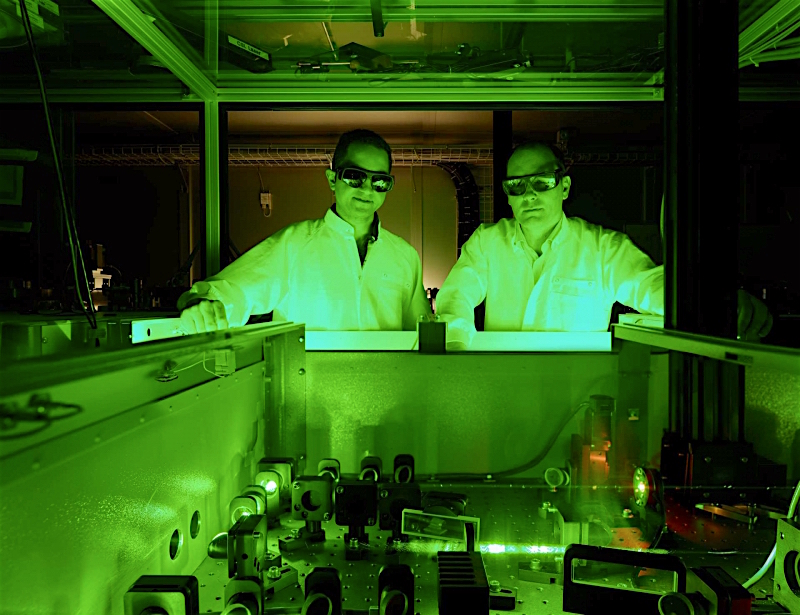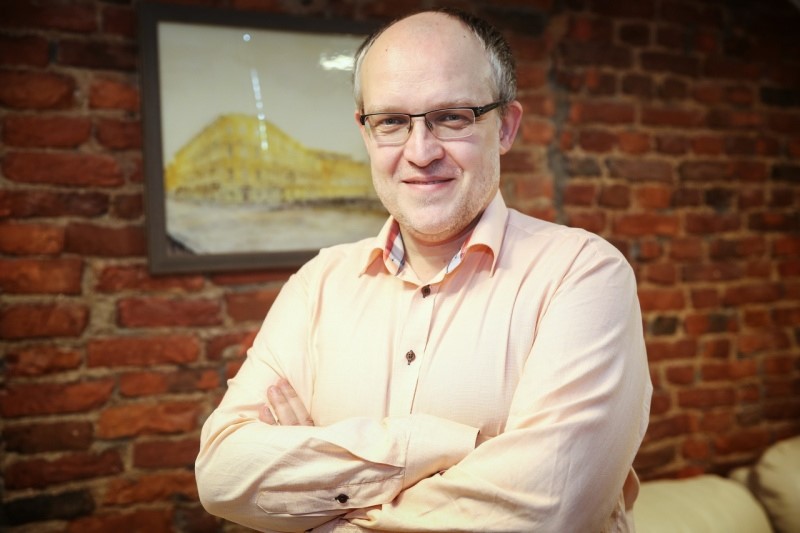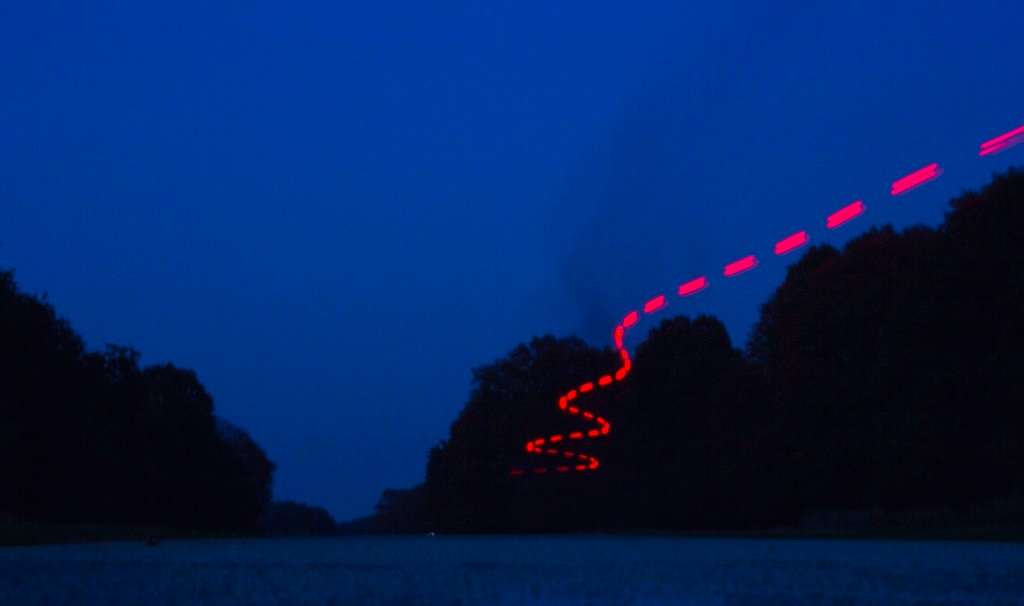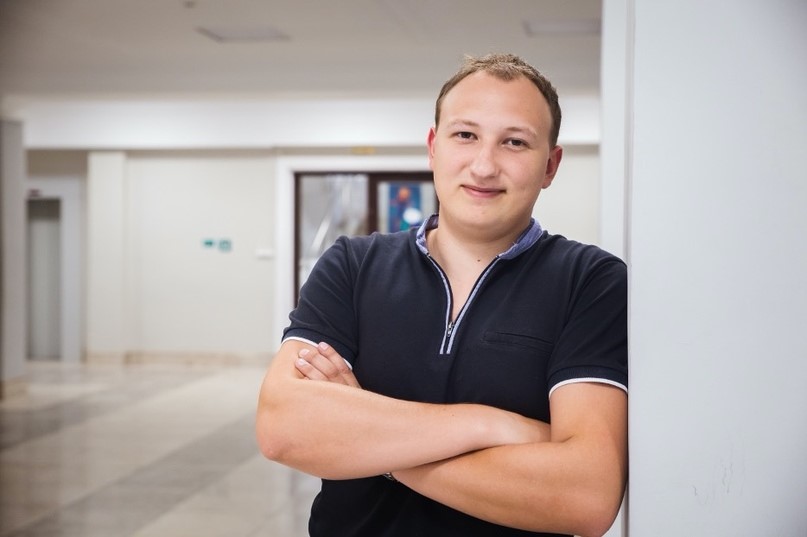
Photo of ITMO University
A few words about the photonics megafaculty
It unites four faculties: applied optics , laser photonics and optoelectronics , photonics and optoinformatics , as well as physics and technology . Here they study technologies related to the processing of light radiation and optical signals.
“If information technology is the industry of the present, then photonics is the industry of the future. The volume of the global photonics market is currently $ 550 billion, but by 2023 it will reach approximately $ 800 billion, which ensures an increase in the need for qualified specialists, including in Russia "
- Vladislav Bugrov , Director of the Photonics Mega-Faculty
In the photo: Vladislav Bugrov
 Employees, undergraduates and graduate students synthesize materials with optical and electromagnetic properties that do not exist in nature, and develop quantum technologies. For example, in 2017, the mega-facultylaunched the first quantum network in Russia and the CIS. This is a data transmission system, in which information is transmitted using photons and is reliably protected from wiretapping and hacker attacks.
Employees, undergraduates and graduate students synthesize materials with optical and electromagnetic properties that do not exist in nature, and develop quantum technologies. For example, in 2017, the mega-facultylaunched the first quantum network in Russia and the CIS. This is a data transmission system, in which information is transmitted using photons and is reliably protected from wiretapping and hacker attacks.
In the future, banks will use the technology. They will receive even more secure communication channels between departments and divisions. Special services and telecommunications companies will also find applications for quantum networks.
In early summer, a group of engineers led by specialists from ITMO's Novy Phystech alsoproposedmethod of "growing" optical chips in an ordinary Petri dish. For the waveguide, the specialists chose gallium phosphide, and for the microlaser - a halide primoskit. The materials are placed in a cup of perovskite ink solution and a light source grows on the waveguide. The waveguide laser is then left on the substrate and the base for the optical chip is created. The radiation range of such a system exceeds the capabilities of analogs with silver or silicon nanowaveguides. The size of the elements of the chip is three times smaller.
« - , , , , , , . , , , , , , , . , , »
— , -
Students are also engaged in scientific work - it often results in publications in thematic journals (Nature Communications, Journal of Physics, Nanophotonics and others) and presentations at international conferences.
Let's talk about the directions of scientific research of the mega-faculty undergraduates.
Nanophotonics and metamaterials
They study new materials with unique optical properties and methods of optical control - how light interacts with matter.
“Students of bachelor's and master's degrees from the very first semesters of study get on scientific practice in the laboratory and instantly grasp everything. Often they are already much better versed in certain issues, and they are already explaining the details of the work - this is wonderful ”
- Georgy Zograf , PhD student at the Physics and Technology Faculty of ITMO
They conduct both theoretical and practical research - the results are recognized at the world level. In 2015, our students together with their teachers managed to predict the existence of a new type of electromagnetic surface waves - hyperbolic plasmon polaritons . Later, the guesses were confirmed experimentally, and over the past five years, these electromagnetic states have been discovered in the microwave, infrared and optical ranges.

Photo: Who's Denilo? / Unsplash
In the future, they can become carriers of an optical signal and be used in information processing and transmission systems.
« , -. 2015 — Physical Review B, »
— , « »
In the photo: Oleg Ermakov
 ITMO University cooperates with a large number of partners - the international center of the Research Center for Nanophotonics and Metamaterials, research laboratories and universities.
ITMO University cooperates with a large number of partners - the international center of the Research Center for Nanophotonics and Metamaterials, research laboratories and universities.
The faculty holds weekly open seminars on topical problems in radiophysics, optics and theoretical physics with the participation of foreign and Russian scientists.
Students have the opportunity to go on international scientific internships with training in English and receive a double degree from one of the European universities. Masters gain the skills required to work in large, industry-specific optical technology companies such as Samsung, Bosch, Huawei and Corning.
Some students decide to launch their own projects - in this case, the faculty provides support. A number of graduates decide to continue their studies in science and continue their academic careers in educational institutions in Russia, China, America, Singapore, Australia and other countries.
« , — . — . , - . . , . , , , , »
—
The educational program was founded in partnership with the Physico-Technical Institute named after A.F. Ioffe. Students in this direction study the theory of photonic structures, solid state optics, electrodynamics of metamaterials, the physics of semiconductor nanostructures, as well as linear and nonlinear magnetophotonics and nanoplasmonics.
Master students can choose a specialization for themselves - courses in theoretical or experimental physics (although it is not forbidden to attend classes in both areas). The theoretical track involves an in-depth study of individual sections of quantum mechanics, as well as numerical methods in semiconductor physics. As for the experimental track, it includes a cycle of laboratory work to get acquainted with the technology of manufacturing semiconductor structures.

Photo: Karsten Würth/ Unsplash
Students and teachers of the university have already implemented several projects in this area. In 2017, theydeveloped anew amorphous silicon-based solar cell coating. The engineers changed the structure of the top electrode of the solar cell by immersing glass objects in the form of a micrometer-sized droplet. They focus light in the semiconductor layer and reduce the reflection of the rays.
“This method allows you to form the structure of the electrode, literally arranging it at the atoms. A very high quality coating is formed, giving good conductivity. As a result, the overall efficiency of the solar cell is increased by 20%. Such an electrode with glass inclusions can be used for thin solar cells based not only on amorphous silicon, but also on any other materials "
- Mikhail Omelyanovich , PhD student at ITMO's New Physicotechnical Institute
In addition to Nanophotonics and Metamaterials and Semiconductor Physics, we have two physics programs based on the Photonics Mega-Faculty - LED Technologies and Optoelectronics and Information Technologies in Thermal Physics. We will tell you more about them next time.
About other areas of magistracy :
- "Food, Economics and Resource Management": Biotechnology at ITMO Master's Degree
- What they do at the Faculty of Low-Temperature Energy at ITMO University
What else do we have on Habré :
- Possibilities of agent-based behavioral modeling in practice
- How to approach syncing AR content with a stadium-wide show
- What scientific data visualization and gamedev have in common